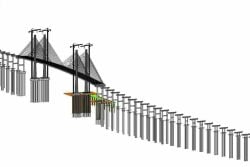WASHINGTON, (Reuters) – Sugarcane grown to power Brazil’s cars and trucks as an alternative to climate-warming fossil fuels has a beneficial side effect: it also cools the local air temperature, scientists reported yesterday.
Researchers warned that this does not mean replacing Amazon forest or other natural vegetation with sugarcane fields. The benefit comes when sugarcane is introduced into existing agriculture, replacing pasture land or crops like soybeans.
Sugarcane manages this win-win feat by its ability to reflect sunlight and to “sweat” out cooling moisture into the air, said lead researcher Scott Loarie of the Carnegie Institution for Science.
Plants draw moisture from the soil and emit it into the air in the process of photosynthesis, Loarie said by telephone, and sugarcane is particularly efficient at making this transfer of cooling moisture.
“We showed that with sugarcane, it was these evaporative cooling effects that were much more significant than the albedo (reflectivity),” he said, speaking of research published online in Nature Climate Change.
Sugarcane is used in biofuel that powers about a quarter of the motor vehicles in Brazil, and in that way, it helps to keep some of the greenhouse gas carbon dioxide out of the atmosphere, which affects global climate.
However, because of its efficiency at emitting cool moisture, it also can push down local temperatures by 1.67 degrees F (0.93 degrees C) compared to other crops or pasture.
Planting sugarcane still does not cool down the air as much as other crops and pasture warm it when they replace natural vegetation. The researchers found this local warming effect was 2.79 degrees F (1.55 degrees C).
One advantage of sugarcane planting for biofuels in Brazil is that it shortens what is known as the carbon payback time.
This is a way of calculating how long it will take to get excess carbon dioxide out of the atmosphere after it is emitted, Loarie said.




